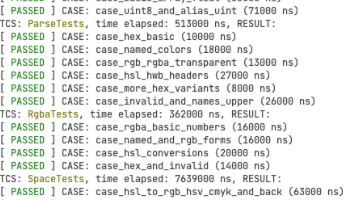Tensorflow-@tf_export详解
@tf_export为函数取了个名字!
Tensorflow经常看到定义的函数前面加了“@tf_export”。例如,tensorflow/python/platform/app.py中有:
@tf_export('app.run')
def run(main=None, argv=None):
"""Runs the program with an optional 'main' function and 'argv' list."""
# Define help flags.
_define_help_flags()
# Parse known flags.
argv = flags.FLAGS(_sys.argv if argv is None else argv, known_only=True)
main = main or _sys.modules['__main__'].main
# Call the main function, passing through any arguments
# to the final program.
_sys.exit(main(argv))
首先,@tf_export是一个修饰符。修饰符的本质是一个函数,不懂可以撮戳这里。
tf_export的实现在tensorflow/python/util/tf_export.py中:
tf_export = functools.partial(api_export, api_name=TENSORFLOW_API_NAME)
等号的右边的理解分两步:
1.functools.partial
2.api_export
functools.partial是偏函数,它的本质简而言之是为函数固定某些参数。如:functools.partial(FuncA, p1)的作用是把函数FuncA的第一个参数固定为p1;又如functools.partial(FuncB, key1="Hello")的作用是把FuncB中的参数key1固定为“Hello"。
functools.partial(api_export, api_name=TENSORFLOW_API_NAME)的意思是把api_export的api_name这个参数固定为TENSORFLOW_API。其中TENSORFLOW_API_NAME = 'tensorflow'。
api_export是实现了__call__()函数的类,不懂戳这里,简而言之是把类变得可以像函数一样调用。
tf_export=unctools.partial(api_export, api_name=TENSORFLOW_API_NAME)的写法等效于:
funcC = api_export(api_name=TENSORFLOW_API_NAME)
tf_export = funcC对于funcC = api_export(api_name=TENSORFLOW_API_NAME),会导致__init__(api_name=TENSORFLOW_API_NAME)被调用:
def __init__(self, *args, **kwargs):
self._names = args
self._names_v1 = kwargs.get('v1', args)
self._api_name = kwargs.get('api_name', TENSORFLOW_API_NAME)
self._overrides = kwargs.get('overrides', [])
self._allow_multiple_exports = kwargs.get('allow_multiple_exports', False)其中第4行self._api_name=kwargs.get('api_name', TENSORFLOW_API_NAME)的意思是获取api_name这个参数,如果未检测到该参数,则默认为TENSORFLOW_API_NAME。由此看,api_name这个参数传进来和默认的值都是TENSORFLOW_API_NAME,最终的结果是self._api_name=TENSORFLOW_API_NAME。
然后调用像函数一样调用funcC()实际上就会调用__call__():
def __call__(self, func):
api_names_attr = API_ATTRS[self._api_name].names -----1
api_names_attr_v1 = API_ATTRS_V1[self._api_name].names
# Undecorate overridden names
for f in self._overrides:
_, undecorated_f = tf_decorator.unwrap(f)
delattr(undecorated_f, api_names_attr)
delattr(undecorated_f, api_names_attr_v1)
_, undecorated_func = tf_decorator.unwrap(func) -----2
self.set_attr(undecorated_func, api_names_attr, self._names) ----3
self.set_attr(undecorated_func, api_names_attr_v1, self._names_v1)
return func因此@tf_export("app.run")最终的结果是用上面这个__call__()来作为修饰器。这是一个带参数的修饰器(真心有点复杂)!
标注1:
api_names_attr = API_ATTRS[self._api_name].names: 中的self._api_name即为__init__()中提到的TENSORFLOW_API_NAME。看看API_ATTRS中都有些什么:
_Attributes = collections.namedtuple(
'ExportedApiAttributes', ['names', 'constants'])
# Attribute values must be unique to each API.
API_ATTRS = {
TENSORFLOW_API_NAME: _Attributes(
'_tf_api_names',
'_tf_api_constants'),
ESTIMATOR_API_NAME: _Attributes(
'_estimator_api_names',
'_estimator_api_constants')
}collections.namedtuple()返回具有命名字段的元组的新子类。从“ExportedApiAttributes”可推测这是用来管理已输出的API的属性的。
标注2:
_, undecorated_func = tf_decorator.unwrap(func)
def unwrap(maybe_tf_decorator):
"""Unwraps an object into a list of TFDecorators and a final target.
Args:
maybe_tf_decorator: Any callable object.
Returns:
A tuple whose first element is an list of TFDecorator-derived objects that
were applied to the final callable target, and whose second element is the
final undecorated callable target. If the `maybe_tf_decorator` parameter is
not decorated by any TFDecorators, the first tuple element will be an empty
list. The `TFDecorator` list is ordered from outermost to innermost
decorators.
"""
decorators = []
cur = maybe_tf_decorator
while True:
if isinstance(cur, TFDecorator):
decorators.append(cur)
elif hasattr(cur, '_tf_decorator'):
decorators.append(getattr(cur, '_tf_decorator'))
else:
break
cur = decorators[-1].decorated_target
return decorators, cur将对象展开到tfdecorator列表和最终目标列表中。undecorated_func获得的返回对象就是我们有@tf_export修饰的函数。
标注3:self.set_attr(undecorated_func, api_names_attr, self._names) 设置属性。
总结:@tf_export修饰器为所修饰的函数取了个名字!

新一代开源开发者平台 GitCode,通过集成代码托管服务、代码仓库以及可信赖的开源组件库,让开发者可以在云端进行代码托管和开发。旨在为数千万中国开发者提供一个无缝且高效的云端环境,以支持学习、使用和贡献开源项目。
更多推荐
 已为社区贡献3条内容
已为社区贡献3条内容







所有评论(0)